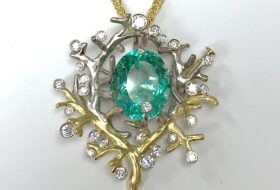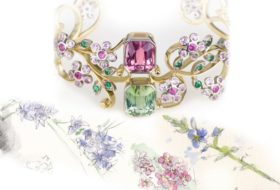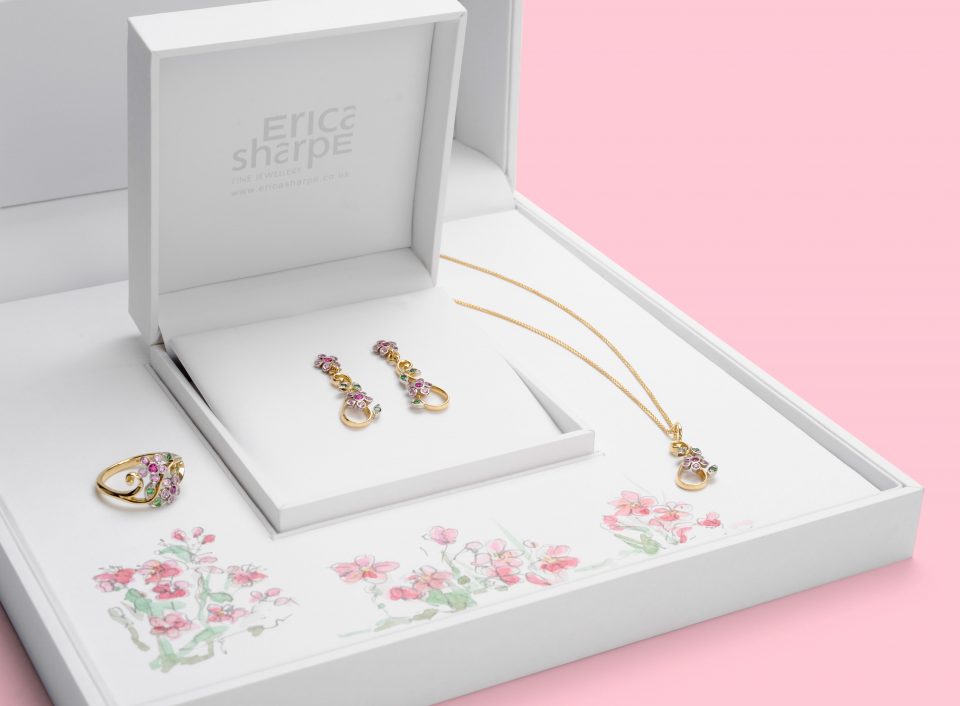To undertake bespoke work, a jeweller needs to show the client the ideas that they have for the finished piece. Over the last 20 years, this process has taken two increasingly divergent paths. The traditional way of expressing design ideas has always been sketching and the final rendering of design options. Now, however, most jewellers offer digital design and images which are often interactive or viewable as videos.
Without a doubt, handmade fine jewellery and design is becoming rarer and has many disadvantages commercially. It is slow, painstaking, requires many years to master and in many fields cannot compete with the technical achievements accomplished by technology such as CNC machines and lasers.
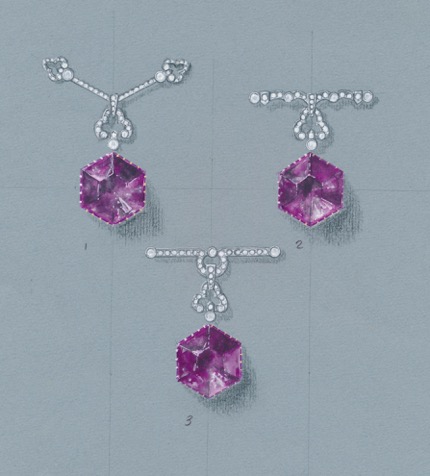 For hundreds of years, jewellery manufacturing houses employed dedicated designers whose sole job was to design and render potential jewels. The skill and training needed to imagine and then depict a piece of jewellery that has yet to exist is quite a complicated one. A designer has to understand how their new creation will be made, the tolerances of the materials, workability of the metals and how far they can be bent, twisted, wrought and also the value of the components and the budget given to the brief. However, if designing on a computer, the programme is often linked to a manufacturing program with built in tolerances and limitations, thus eliminating the need for knowledge of the manufacturing processes. These digital manufacturing processes are very different from hand-crafted methods too, so that situation is difficult to compare with a hand-crafted project.
For hundreds of years, jewellery manufacturing houses employed dedicated designers whose sole job was to design and render potential jewels. The skill and training needed to imagine and then depict a piece of jewellery that has yet to exist is quite a complicated one. A designer has to understand how their new creation will be made, the tolerances of the materials, workability of the metals and how far they can be bent, twisted, wrought and also the value of the components and the budget given to the brief. However, if designing on a computer, the programme is often linked to a manufacturing program with built in tolerances and limitations, thus eliminating the need for knowledge of the manufacturing processes. These digital manufacturing processes are very different from hand-crafted methods too, so that situation is difficult to compare with a hand-crafted project.

I worked in the trade as a bench jeweller for about six years before I felt able to try my hand at rendering designs. I began by making lots of sketches and illustrations of gemstones and jewellery that I had in front of me. Capturing the jewels as accurately as possible is the aim and drawing them from life enables you to build up a memory that can be used in imagining new designs. There are certain rules and tricks, such as keeping the imagined light source consistent – I always design with the light falling from the top left.
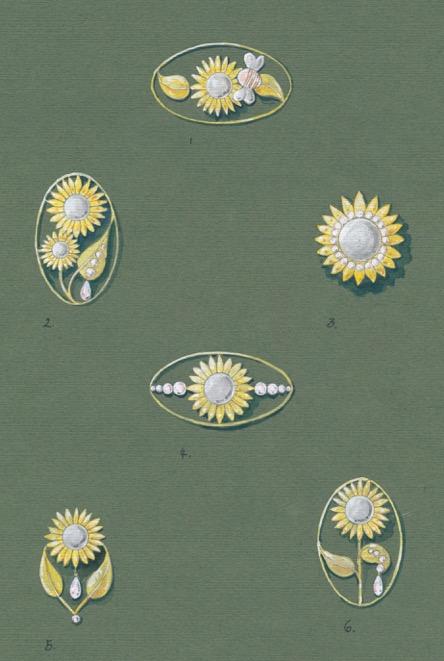
I work on thick, coloured paper and choose a background shade that will complement the pieces and show the gemstones off to their best. A plain mid-blue, grey, brown or sand colour are usually my favourites. The paint I use is watercolour and occasionally gouache. White gouache works brilliantly for highlighting areas where the light is hitting the piece.
I draw with a very fine propelling pencil and paint with a selection of very small sable paint brushes. This allows me to outline tiny gemstones with detail and is light enough not to swamp the form.
Hand drawn and rendered design skills are not being taught as standard any more. Does this make them a rare premium? Or perhaps just something obsolete in the face of accessible and convenient digital opposition? I would suggest they are probably both. Without doubt they encompass expression, immediacy, a personal and emotive response between maker and customer; an artistic, unique and developing map of the path from an idea to an item.





